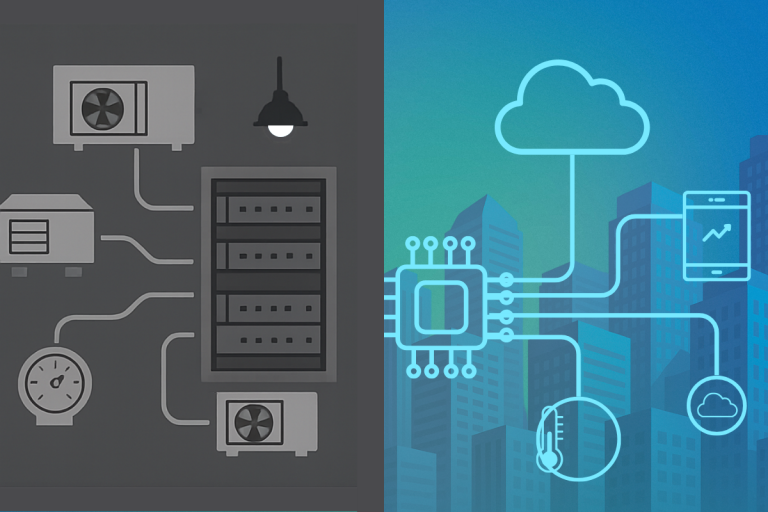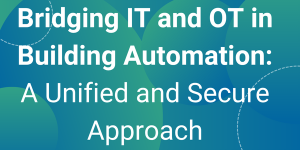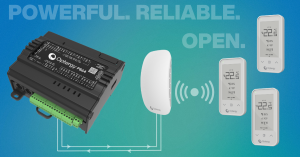From Traditional to Edge: The Evolution of Building Automation Controllers

The Shift to Edge: Redefining Building Automation for the Future
In the world of building automation, the tools we use to manage comfort, energy, and performance have come a long way. For decades, traditional Building Management System (BMS) controllers served as the foundation of facility control. These legacy systems were reliable for their time but were largely centralized, rigid, and dependent on proprietary infrastructures. Today, however, the industry is experiencing a fundamental shift—one driven by edge computing, open integration, and the seamless flow of data between local devices and cloud platforms.
Traditional BMS controllers were designed around a centralized architecture that made sense for their time. They relied on a supervisory server or head-end software to process data, manage logic, and store trends. Control panels across a building would relay data back to a central system, which handled decision-making and issued commands. While this approach offered consistency and control in earlier infrastructures, it could introduce latency and potential points of failure if the central server went offline or communication was disrupted. As buildings and campuses became more complex, scaling these centralized systems also presented challenges.
Modern edge controllers turn that model on its head. Instead of pushing all data to a central brain, edge devices now carry the intelligence to process information, run control logic, and even visualize data locally. These controllers operate at or near the source of the data—whether that’s an air handling unit, chiller, lighting system, or energy meter. By working at the edge, these devices dramatically improve system speed, resilience, and adaptability. A building no longer needs to wait for centralized processing to react to changing occupancy, temperature shifts, or mechanical faults. Instead, decisions can be made in real time at the point of need.
A major leap forward in this evolution is the widespread adoption of open protocols and web-based standards. Unlike their proprietary predecessors, today’s controllers support open communication formats and expose data using RESTful APIs. This is a game-changer for integration. REST APIs enable systems to push and pull data over standard HTTPS, making it far easier for building systems to talk to enterprise software, mobile applications, or cloud analytics platforms. Whether it’s sending energy performance data to a sustainability dashboard or feeding real-time occupancy trends to a space management app, REST APIs make those connections smooth, secure, and scalable.
Another important aspect of edge-based systems is their ability to act as gateways to the cloud. Rather than flooding the cloud with raw data from hundreds of sensors and devices, edge controllers can filter, preprocess, and summarize information before sending it upstream. This reduces bandwidth requirements and ensures that only meaningful data reaches cloud-based platforms. It also allows for a hybrid control model—where basic automation is handled locally for speed and reliability, while long-term analytics, reporting, and optimization happen in the cloud.
This distributed architecture offers benefits beyond speed and integration. It also enhances cybersecurity. By limiting the exposure of internal building networks and pushing data through controlled APIs, edge systems reduce the risk profile traditionally associated with centralized BMS architectures. With secure remote access and the ability to update firmware or control logic over the air, modern controllers ensure that building systems remain protected and up-to-date.
Ultimately, the move from traditional BMS to edge-enabled automation is not just a technical upgrade—it’s a strategic one. It allows buildings to be more responsive, efficient, and connected to the broader digital ecosystem. Facility managers gain more actionable insights, building owners enjoy lower total cost of ownership, and integrators benefit from faster commissioning and easier integration.
As the industry continues to evolve, the buildings that thrive will be those that embrace this shift—not only automating their systems, but intelligently connecting them to deliver greater value over time.




